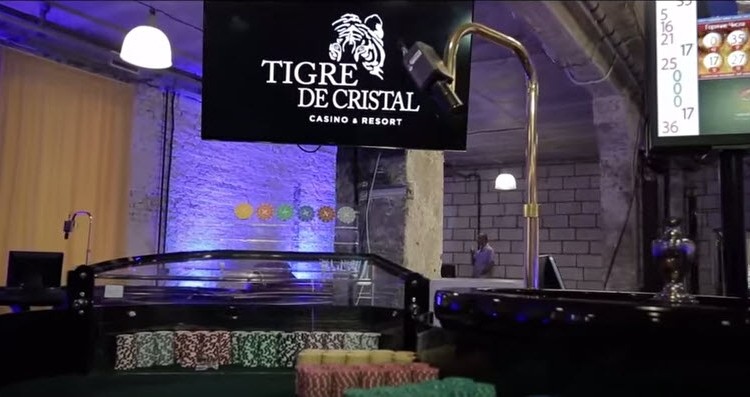The Vladivostok area of Russia will soon see the premiere of Tigre de Cristal Casino & Resort with a soft launch anticipated on October 8th and a full opening several weeks later when all systems have been tested for full operations.
The first phase of the G1 Entertainment LLC’s (formerly First Gambling Company of the East) contribution to the “New Macau” will feature a luxury 121 key hotel, 2 restaurants, a spa, and opulently appointed casino with soaring columns, high ceilings, mosaic tiles and plush carpets. Dignitaries are already visiting for tours and dealers and hostesses are trained awaiting the big day. A recent filing with the Hong Kong Stock Exchange notes that interest in jobs, “has been intense with applications totaling 10 times more than the available positions.”
The more than $200 million launch (some company spokespersons place that at $500m) is expected to provide an engine to further develop Tigre de Cristal with an additional 300 rooms, a theater and sports infrastructure. Phase II with an additional investment in Tigre de Cristal of $500 million ($900m according to some) is expected to begin in 2016. By the end of 2019 both phases should be complete along with three more operators having opened their facilities; Diamond Fortune’s Selena World Resort, NagaCorp’s Entertainment City, and Royal Time Group’s Phoenix.
The Primorye Entertainment Zone is expected to have continuous development until the venture employs some 20,000 people directly and spurs the creation of at least 100,000 positions, indirectly, throughout activities of the integrated area.
The current overall vision is for 16 hotels, 8 casinos, 10 villas, multiple dining and entertainment venues, a yacht club, nearby ski slopes, theaters, and full scale entertainment centers.
Although each developer so far has committed a minimum of 600 million rubles in possessed assets, and Tigre de Cristal will have a head start with revenues from first casino operations, there is no shortage of potential customers to feed the coffers and economic engine of the integrated resort area. As many as 200-300 million qualified customers live relatively close-by with high demand, as shown by early registrations, from Russian customers. South Korea, China, and Japan are also seen to be among markets ripe to entertain.


